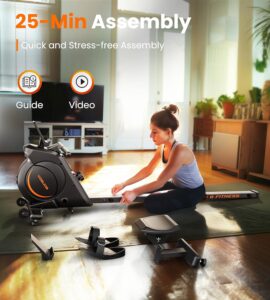I got to run for the first time in a while and it felt amazing! It’s been a tangle of soggy ground, a busy schedule, sickness, and injuries so I’m not even sure how long it’s been- several weeks. My speed and stamina is not at all what it was, but I’ll get it back- and I’ll surpass it! Once I hit an 8 minute mile, I was feeling pretty satisfied with myself. But again, I’ve got some work to do to get back there. On this day, being out of practice, I forgot to use my inhaler beforehand. (I’ve learned that if it’s below about 85 degrees, I need it.) It only took about 3 laps (42 laps around my back yard is 2 miles) before I started tasting blood in the back of my throat. Since it wasn’t especially cold, I figured I probably wouldn’t end up coughing for the next several days. So what is this?
Exercise-Induced Asthma (EIA), or Exercise-Induced Bronchoconstriction (EIB), is a condition where physical activity leads to narrowing of the airways, making it difficult to breathe. This can occur in individuals with or without underlying asthma. The key to understanding EIA is to break down the physiological and biochemical mechanisms at play, including airway hyperreactivity, the effects of increased airflow and drying, mast cell activation, inflammation, broncoconstriction, mucus production, and even capillary rupture. We will also discuss prevention and treatment strategies.
Biochemical Mechanisms and Pathophysiology:
1. Airway Hyperreactivity:
Airway hyperreactivity refers to the tendency of the airways to constrict excessively in response to stimuli that wouldn’t affect a healthy airway. In the context of EIA, this hyperreactivity is triggered by exercise. Under normal conditions, airways respond to irritants like allergens or pollutants with mild inflammation. In those with EIA, however, the airways become hyper-responsive to increased airflow during physical exertion, especially in cold, dry, or polluted environments.
- Mechanism: When someone exercises, the body requires increased oxygen, and the respiratory system compensates by increasing ventilation (breathing rate). This results in a larger volume of air passing through the airways, some of which may be cold and dry, especially if the person is breathing through their mouth.
- Increased Airflow: Breathing faster and deeper during exercise increases the amount of air entering the lungs. If the air is cold or dry, it doesn’t have enough time to be warmed and humidified in the upper airways (nose, throat), which can irritate the lining of the lower airways and trigger an inflammatory response.
- Osmolar Stress: The rapid flow of cold or dry air dehydrates the mucosal lining of the airways, a phenomenon known as osmolar stress. This stress leads to inflammatory mediator release, such as histamine, leukotrienes, and prostaglandins, which further promote airway narrowing.
2. Increased Airflow and Drying:
When exercising in certain environments, the temperature and moisture of the air can significantly affect the degree of airway irritation and EIA symptoms.
- Cold Air: When air is cold (especially in winter), it holds less moisture. As we breathe in cold air during exercise, the body has to warm and humidify this air before it reaches the lungs. However, during intense exercise, the body can’t always keep up with this process, leading to drying of the airways. Dry air increases osmolar stress on the cells lining the respiratory tract. This stress activates signaling pathways that lead to inflammation and bronchoconstriction.
- Dry Air: Dry air, even if not cold, can also cause drying of the airway lining. This dehydration activates the epithelial cells (cells lining the airways) to release pro-inflammatory mediators that increase airway inflammation and constriction.
3. Mast Cell Activation and Inflammation:
Mast cells are immune cells found in the airways and are a key player in the inflammatory process. When activated, mast cells release a range of chemicals that promote inflammation and cause airway constriction.
- Mediators Released by Mast Cells: During exercise, especially in individuals with EIA, mast cells are triggered by airway irritation (drying, cooling, osmolar stress). Once activated, mast cells release inflammatory mediators, including:
- Histamine: This mediator increases blood vessel permeability, causing fluid leakage into the tissues, which leads to swelling (edema) and narrowing of the airways.
- Leukotrienes: These molecules are potent bronchoconstrictors and increase inflammation, further narrowing the airways.
- Prostaglandins: These also contribute to inflammation, causing the smooth muscles around the airways to contract and making breathing more difficult.
- Cytokines and Chemokines: These are small proteins that act as signals for other immune cells to come to the site of inflammation, exacerbating the inflammatory response and promoting further airway narrowing.
4. Bronchoconstriction:
Bronchoconstriction is the narrowing of the airways caused by the contraction of smooth muscle that surrounds the bronchi (air passages in the lungs). This is a hallmark of asthma, including EIA.
- Smooth Muscle Contraction: The inflammatory mediators (histamine, leukotrienes, cytokines) released by mast cells cause the smooth muscle cells in the bronchi to contract, narrowing the airways. This reduces the flow of air into and out of the lungs, causing difficulty breathing, wheezing, and a feeling of chest tightness.
- Bronchospasm: The smooth muscle contraction is referred to as bronchospasm. In EIA, this is triggered by exercise-induced environmental stressors (cold or dry air) and the release of inflammatory substances.
5. Increased Mucus Production:
In response to airway irritation, the goblet cells (specialized mucus-producing cells) in the airways increase their mucus secretion. This mucus is intended to trap and remove irritants but, in EIA, contributes to airway obstruction and worsens breathing difficulties.
- Mucus in the Airways: As mucus production increases, it can thicken and block the smaller airways, making it harder for air to pass through. This increases coughing and the sensation of mucus buildup in the chest.
- Goblet Cell Hyperplasia: In some chronic cases of EIA, there may be goblet cell hyperplasia, a condition where the number of mucus-producing cells in the airways increases over time, further exacerbating the problem.
6. Capillary Rupture and Blood in the Throat:
Some individuals with EIA report tasting blood in the back of their throat, a symptom that can occur during or after intense exercise.
- Capillary Rupture: The increased blood flow to the lungs during exercise, combined with airway constriction and inflammation, can put pressure on the small blood vessels (capillaries) in the lungs. The fragile capillaries can rupture, leading to small amounts of blood leaking into the airways.
- Drying and Irritation: The drying effect of cold, dry air can also damage the capillary walls, making them more prone to rupture. When blood from these ruptured capillaries mixes with mucus, individuals may experience the sensation of blood in their mouth or throat, especially after coughing.
Prevention and Treatment:
1. Prevention Strategies:
- Warm-Up and Cool Down: Gradually increasing and decreasing the intensity of exercise can help prevent the sudden changes in airflow that trigger symptoms. Breathing exercises that slow down the rate of breathing may also help.
- Environmental Control: Exercise in a controlled environment where the air is not too cold or dry. Wearing a scarf or mask over the mouth can help warm the air before it enters the lungs. Avoiding outdoor exercise on days with high pollution or allergens can also reduce symptoms.
- Avoidance of Triggers: If the individual has known triggers like allergens or pollution, avoiding those environmental factors or exercising indoors may help.
2. Pharmacologic Treatment:
- Short-Acting Beta-Agonists (SABAs): These are bronchodilators (e.g., albuterol) that relax the smooth muscles in the airways, helping to open them up and ease breathing. These are typically used before exercise to prevent bronchoconstriction. This is the only treatment that I have personally seen used to specifically treat EIA. The others are theoretically possible, but this is going to be the go-to in the real world.
- Leukotriene Receptor Antagonists (LTRAs): Medications like montelukast block the effects of leukotrienes, reducing inflammation and bronchoconstriction. These are used as preventive treatment for individuals with frequent EIA.
- Inhaled Corticosteroids (ICS): In more chronic cases, ICS (e.g., fluticasone) are used to reduce baseline airway inflammation and prevent the inflammation that leads to bronchoconstriction.
- Long-Acting Beta-Agonists (LABAs): These are bronchodilators that provide longer-lasting effects than SABAs and are sometimes used in conjunction with inhaled corticosteroids to manage persistent asthma and EIA.
- Mast Cell Stabilizers: Cromolyn sodium is a medication that can be used before exercise to prevent mast cell activation and the subsequent release of histamine and other inflammatory mediators.
3. Lifestyle Changes:
- Hydration: Staying well-hydrated helps maintain the moisture of the mucosal lining in the airways, reducing the chance of irritation.
- Physical Conditioning: Gradually improving physical fitness may help reduce the severity of EIA. Moderate-intensity exercise may also improve overall lung function over time.
Conclusion:
Exercise-induced asthma (EIA) occurs when exercise triggers an exaggerated response in the airways, leading to bronchoconstriction, increased mucus production, and inflammation. The underlying biochemical mechanisms include airway hyperreactivity, mast cell activation, the release of inflammatory mediators like histamine and leukotrienes, and the effects of dry or cold air on airway function. In severe cases, capillary rupture can cause blood to appear in the mouth or throat. Prevention strategies can greatly help manage symptoms.
Please don’t think that you can’t be athletic just because of something like this. If you need to lose weight, boost your mental health, or just be fast, don’t be deterred. You can absolutely manage your symptoms and you can exceed your limits time and time again. You are your best opponent as well as your best cheerleader. Do what you need to do. Get out there and do it!



